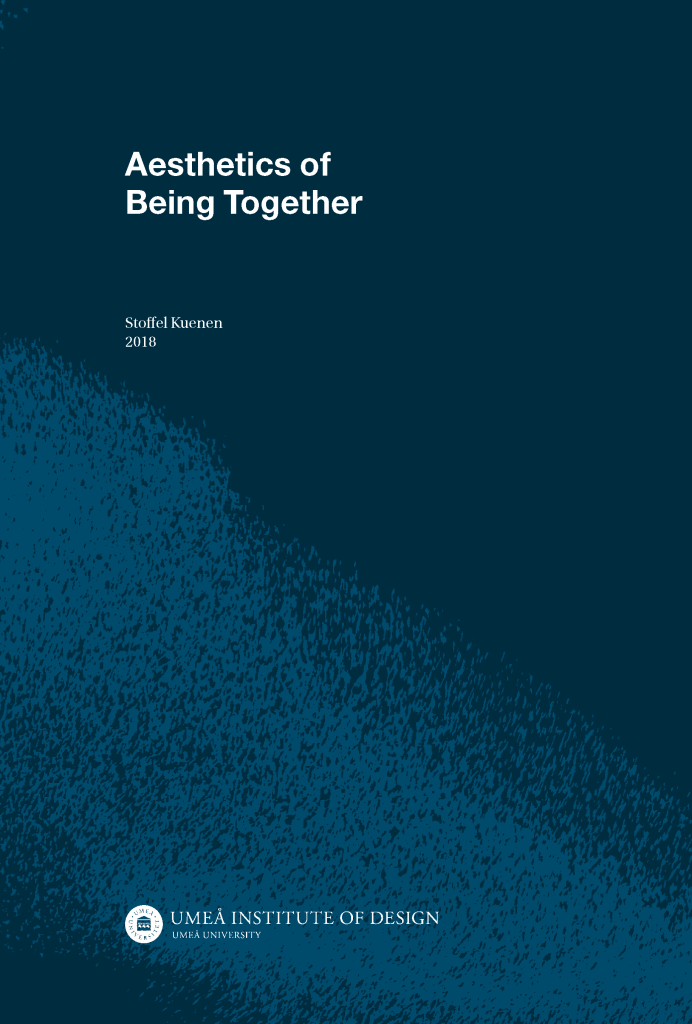On November 30, 2018, I defended my PhD Thesis successfully.
Dag Svanæs performed the role of opponent; grading committee consisted of Marianne Graves-Petersen, Ylva Fernaeus and Charles Lenay.
A brief basic summary of the work was posted on the pages of UID. This led to a full page article in the national newspaper DN “Sociala Medier är inte så sociala”.
Design deals with matters of aesthetics. Historically, aesthetics in industrial design refers to the designed artifact: aesthetics of objects. When designed artifacts include digital technologies, aesthetics in design refers to what happens between people and artifacts as well: aesthetics of interaction. Now that these artifacts increasingly mediate our social lives, what aesthetics in design quite obviously also refers to, is what happens between people.
This dissertation proposes an aesthetic of being together, as a necessary addition to current notions of aesthetics in interaction design practice, when it engages with digital systems that are part of people’s social life. It does not answer the question what Aesthetics is in general, instead it examines the work that particular notions of aesthetics do in interaction design practice.
The practice based design research assembled in this dissertation starts from current notions of aesthetics in interaction design to explore the social experiences that mediated interactions between groups of people offer. What I found, through designing digital systems, is that current notions of aesthetics in interaction design are not conducive to addressing the kind of social experience people have with such systems. On the contrary, current notions actually inhibit interaction design to approach any experiences that cannot in the first place be conceived of as useful in terms of instrumental task performance. Yet, being social is hardly like performing a task or using other people in that sense.
An aesthetic of being together is a proposition of a different fundament for interaction design practice. In addition to referring to properties of things and qualities of interacting with things, it refers to the kind of relations that come to expression between people interacting with each other with these things. Consequently, interaction design needs to resolve basic issues in what it considers and brings to expression, i.e. people’s relations with things and people at the same time. This requires (re-) considering what the designed thing is, what interaction is about and what the role of design is in bringing those to expression.
My work contributes to the field of interaction design research an example of how, through practice, fundamental issues can be addressed. By orienting one set of concepts, ways of working and objectives into a different design situation, tensions built up that exposed foundational issues with that frame of reference, while pointing to the different fundaments needed to enable design practice to engage such situations.
The results of the practical experimentation led to the articulation of a series of structural mechanisms of mediating systems. These mechanisms provide material handles for interaction designers on how experiences of being present with others take shape. They configure the relations of artifacts and people in different ways than current notions of aesthetics afford. This theoretical investigation is then synthesised in the form of a new logic of expression for interaction design practice: an aesthetic of being together.


